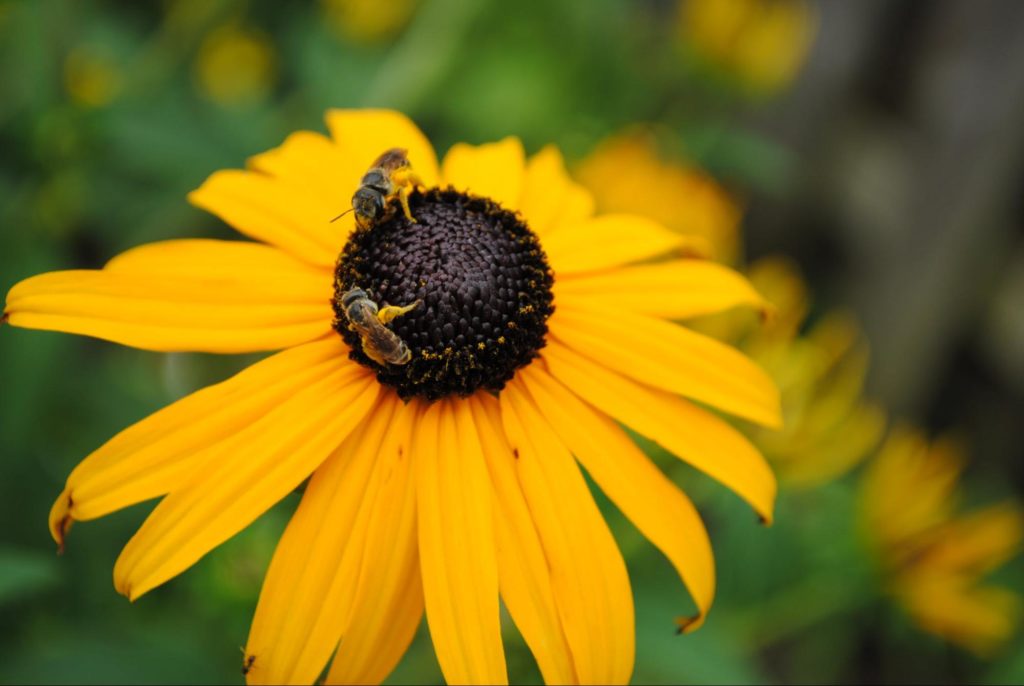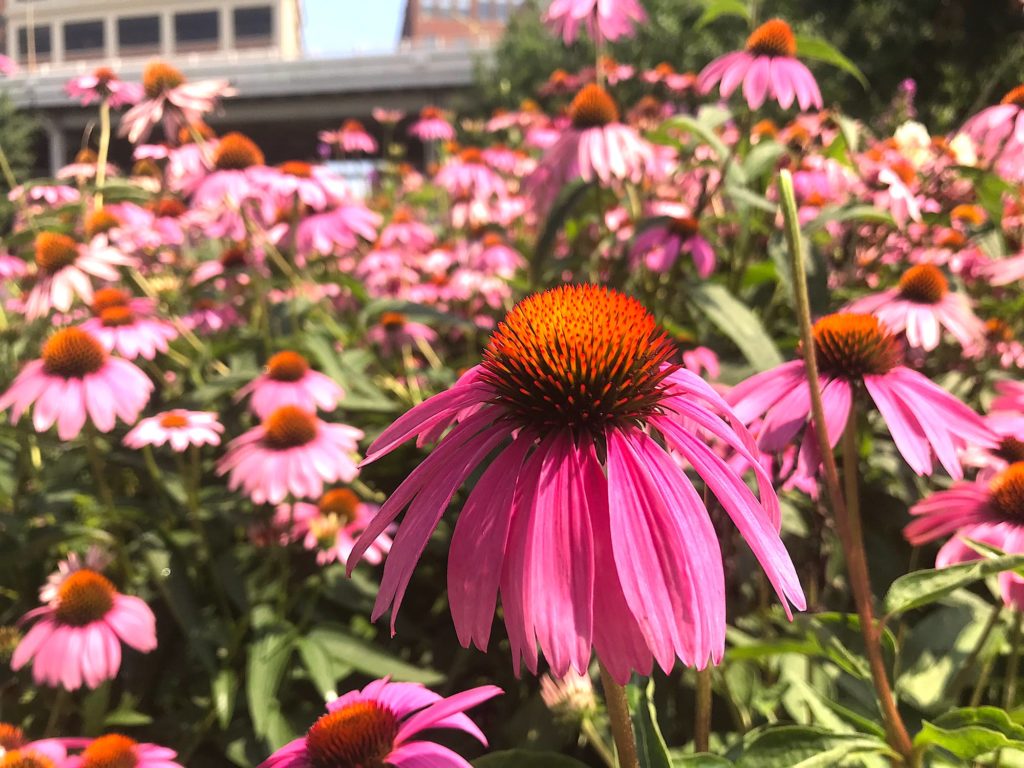
01
When to Plant Perennials in the Midwest
02
How to Prepare Soil for Perennials
03
Planting Perennials
04
Caring for Perennials
Lovely and reliable perennials account for some of our all-time favorite plants. Partly because there’s such a wide variety of them — from trees to shrubs to flowers — and partly because they’re so darn dependable. Unlike other plants that require replanting each year, you can count on perennials to survive bitter Indiana winters and bloom just as beautiful come springtime. Plus, perennials, similar to trees, can increase your home’s value! If you’re looking to introduce some new plants to your garden this year, here’s everything you need to know about planting perennials:
When to Plant Perennials in the Midwest
Once they’re established, perennials are pretty hardy. But when they’re starting off, they can be as finicky as any new plant. Ideally, perennials should be planted in mild seasons like spring and fall— here in the Midwest, and most other regions, too. Winter isn’t a great time to plant, mainly because the ground is too frozen to move the soil anyways! While it’s possible to plant some perennials in the summer sun, they’ll need a lot of water to survive such long days and extreme temperatures. Of course, with such a wide variety of plants, there will always be some exceptions, so you should always check the specific planting instructions of your new plants.
Any experienced gardener will agree that planting perennials in the fall is best. There’s a great balance between sunshine and cooler temperatures, but the soil is warm enough to keep your plants’ roots comfortable.

How to Prepare Soil for Perennials
The best way to make sure your new perennial plants flourish is to ensure they have nourishing soil. You can figure out if your soil is adequate just by taking a quick look at it— rich soil tends to be pretty dark in color, while lousy soils are kind of a rusty red color. If you want to be sure, pick up a soil testing kit to find out the nutrient content and the pH of your soil, so you can amend it with necessary materials before planting. Here’s how to correct some common soil problems:
Improper drainage and soil texture are common problems, with serious consequences. Most perennials thrive in soils with enough drainage so water doesn’t pool (like in heavy, clay soils), but also doesn’t run through so quickly that the roots have difficulty taking up moisture (like in sandy soils). Loamy soils are ideal, but that’s not always what we’re blessed with. Adding compost is a great way to improve drainage in heavier soils. We recommend Purple Cow Activated Compost as a great, organic product for those who prefer not to compost at home. Clay, shredded bark, and vermiculite are useful for helping thinner soils retain more moisture.

Soil nutrient profile can also be improved by mixing organic matter in with your planting site. Tiny microorganisms enrich the soil, keeping it fertile for the long run. Basically, besides the odd plant that thrives in poor soils, organic matter and compost are rarely a bad idea! You can also improve nutrient content or target specific nutrient deficiencies with commercial fertilizers. Perennials aren’t as hungry as annuals tend to be, but an all-purpose fertilizer can be useful to kickstart new growth at the beginning of the season. Purple Cow BioActive All-Purpose fertilizer is a great option because it’s 100% organic and safe to use around kids and pets, unlike some chemical-based options. For perennial beds and vegetable gardens, fill the garden with a premium soil, like Dr. Earth Vegetable Garden Planting Mix for ideal nourishment.
Soil pH is another element that can be easily altered based on plant preference. Some plants prefer a neutral pH, while others like slightly acidic conditions and a few even prefer alkaline soils. You can use limestone or wood ash to raise the pH of the soil, to get it at a more neutral or alkaline level. Acidic fertilizers, sphagnum peat, and sulfur-containing products are useful for lowering pH to make it more acidic.

Planting Perennials
Whether you’re planting perennials from seed or transplanting seedlings and established plants, the most important thing to remember is to read the packaging that comes with your seeds and plants for planting instructions. This should indicate the type of soil, sunlight, and moisture conditions required for optimal growth. Once you’ve amended the soil appropriately and have chosen an area that’s either full sun, part sun/part shade, or full shade, you’re ready to start planting!
Planting perennials from seedlings and plants might take a little more effort, but they’ll adjust to their new home much quicker since their roots are already established. Usually, you can dig a hole in the ground that’s 3X the size of the perennial’s root ball, but this will vary depending on the plant. Gently untangle the roots and set the root ball in the hole, scattering the roots in all directions. Fill the hole in with soil and water generously to help it settle in. You might need to top it up with soil again after the first watering. Make sure none of the leaves get buried or moistened, as this causes root rot.
Planting perennials in pots is pretty similar to planting them in the garden, except you’ll need to pick out an appropriate container. Make sure the pot is large enough to hold your plant’s root system, and consider what size it will become at maturity. If it’s not fully developed, start smaller and upsize as needed. Make sure it has drainage holes on the bottom, otherwise, water will pool and rot the roots of your new plants.

Caring for Perennials
Luckily, the hardest part of planting perennials is just that—the planting! Give them extra attention while they’re still young, but they’re likely to survive with little maintenance going forward. There are some routine things you can do to keep them flourishing, though.
In spring, apply mulch around your new and old perennials. Mulch is made of organic materials, like shredded bark and wood chips, providing a protective layer over your plants’ roots. This is useful when the summer sun is beating down, evaporating much-needed moisture from the soil.
Speaking of moisture, establish an irrigation system. Whether that means you’re committed to taking frequent walks around the garden with a watering can, or you’d rather set up a trusty irrigation system with hoses and timers, just make sure your plants get the water they need. In general, perennials should be watered whenever the soil is dry to touch, especially during their first few years. After that, rainfall should be enough unless there’s a particularly dry period. Potted plants have a smaller, closed system to draw nutrients and moisture from, so they naturally need to be watered and fertilized more often.
Many perennial shrubs and trees require annual pruning, so be prepared to take a day or two every spring to snip away dead or unnecessary branches. Not only will this make them look neat and tidy for the summer season, but it will encourage new growth and ample blooms on those that flower!

Start your perennials off on the right foot—or root—and they’ll reward you with years and years of gorgeous greenery and blooms. As the backbone of our garden and some of nature’s finest features, you can never go wrong with the presence of more perennials.
